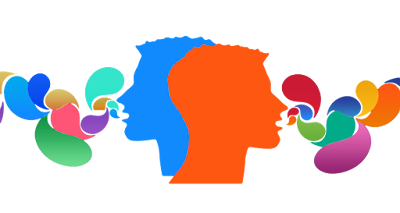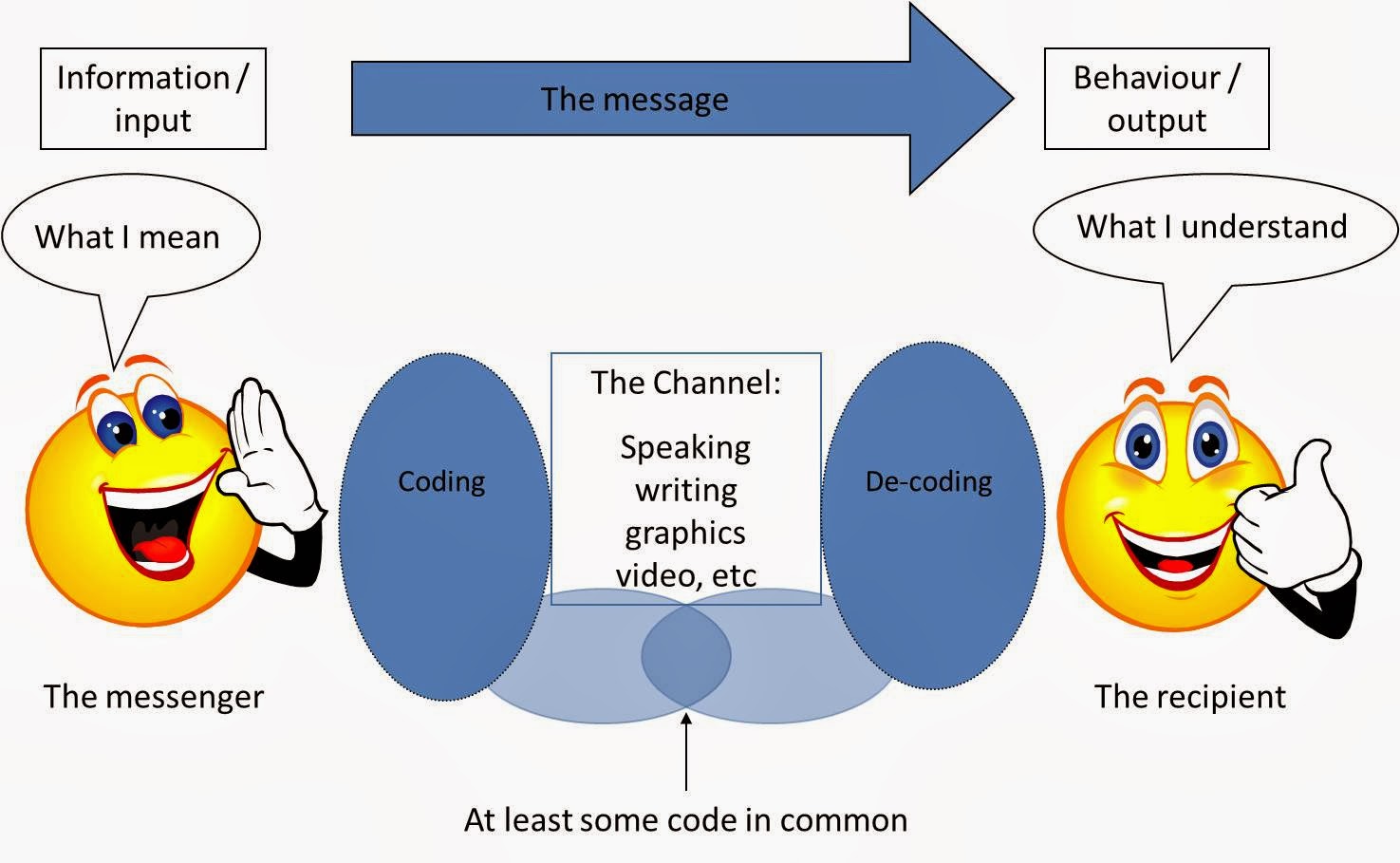Principles of Communication
To understand the concept of communication- both verbal and nonverbal, it is crucial to understand the principles (the governing force) first.
1] Communication is Constant.
We simply cannot NOT communicate. It means we are always communicating. Too often we believe that while we are not talking, we are not communicating, but we forget the fact that though we communicate we may not be communicating verbally, our nonverbal communication is constantly displaying signs and cues that reflect what we are thinking and feeling. Our postures, gestures, facial expressions, clothes, time, place are some of the nonverbal cues that others perceive and interpret.
2] Communication is Transactional.
Communication can be viewed as a transaction in which the meanings of messages are negotiated between people. At a deeper level, the transactional nature of communication encourages us to regard others and ourselves in a much more complex way. We no longer view the receiver of our message as a receptacle in which we deposit our thoughts and feelings without message distortion. This understanding creates sensitivity to others. Here the focus is shifted from the self to others to participate equally in communication in which the receiver is regarded with greater sensitivity and respect.
3] Communication is a Process.
Communication is a process of a flowing river. It is continuous and always changing. We can appreciate communication only when we view the individual words, sentences, and gestures of communication as a part of an ongoing process.
We, the creators of these messages, are also in process. How we perceive the world and communicate with others in the morning can be vastly different during the late hours in the evening. Like a river, from moment to moment, we twist and turn, constantly changing the depth of our perceptions, thoughts, and feelings as we travel from morning to evening. From year to year, we change dramatically in our interests, beliefs, fears, and desires. In short, we are constantly evolving.
4] Communication is Learned/Learnt.
Our communication patterns and behaviours are learned. The language we acquire, the extent of vocabulary in use, the way we speak, our gestures, our postures, our touch and how we dress are just a few of the many examples of learned communication behaviour. This aspect is very useful in social as well as cultural context.
The principle that communication is learned suggests that communication can be unlearned, and new ways of communicating can be acquired. This is most exciting because then we can replace ineffective and unhealthy ways of speaking, listening, behaving with more effective and healthy ways.
5] Communication is Creative.
The communication creativity is much broader than the creativity associated with art, music, and poetry. It is the creativity expressed in our daily expressions. Here are some of the examples: The words we choose, when we choose to silent, the way we listen, the time we decide to speak, the sentence we create, the facial expressions, posture and gestures we use, the home we live in, the room we decorated. These are some of the examples, the way we create communication in our life.
Our communication and its impact on others do not just happen. We make it happen. We decided whether or not to return a phone call. We decide whether or not to respond to lunch invitation. We create ripples of effects by choosing one behaviour and not another. We always create something in our communicative life.
6] Communication begins with the self.
How we see ourselves can make a significant difference in how we communicate. Carl Rogers (1951) wrote, “Every individual exists in a continually changing world of experience of which he [or she] is the centre.” For instance, when people are treated as though they are inferior, or intelligent, or gifted, or unattractive, they will often begin acting accordingly. Many communication scholars and social scientists believe that people are products of how others treat them and of the messages others send them.
7] Communication involves others.
Communication may be understood as a dialogic process. Dialogue is simply the act of taking part in a conversation, discussion, or negotiation. When we describe and explain our communicative exchanges with others, we are doing so from a perspective of self and from a perspective derived from interacting with others. Our understanding of communication occurs not in a vacuum but the light of our interactions with other people.
In a more obvious way, communication involves others in the sense that a competent communicator considers the other person’s needs and expectations when selecting messages to share. The competent communicator understands that a large number of messages can be shared at any time, but sensitivity and responsiveness to the other communicators are indispensable. In short, communication begins with the self, as defined largely by others, and involves others, as defined largely by the self.
8] Communication has both a content and relational dimension.
All messages have both a content and a relational dimension. Messages provide substance and suggest a relationship among communicators. Another way to think about this distinction is that the substance of the message describes the behaviour that is expected, while the relational message suggests how it should be interpreted. For example, if one asserts, “Sit down,” the content of the brief message is a request for someone to be seated. Relationally, one is suggesting that one has the authority to tell someone to be seated. Consider the difference between “Sit down!” and“Would you care to sit?” While the content is essentially the same, the relational aspect seems far different.The content of the message is less ambiguous than is the relational message.
9] Communication is complicated.
Communication, as some believe, is a simple matter of passing information from one source to another. In a sense, communication defined in this way would occur whenever we accessed information on the web. However, we know that even in this most basic case, communication does not necessarily occur. For example, if we access a homepage written in a language we do not understand, no communication occurs. If the material is highly complex, we might not understand its message. Similarly, we might be able to repeat what someone else says to us, but with absolutely no understanding of the intent, or the content, of the message. Communication is far more than simple information transmission. Communication involves choices about the multiple aspects of the message—the verbal, nonverbal, and behavioural aspects; the choices surrounding the transmission channels used; the characteristics of the speaker; the relationship between the speaker and the audience; the features of the public; and the situation in which the communication occurs. A change in any one of these variables affects the entire communication process.
10] Communication quantity does not increase communication quality.
There is a widespread myth around the world that more communication, the better the result will be. Counsellors or therapists are encouraging people to communicate more: “What we need is more communication.” However, greater amounts of communication do not necessarily lead to more harmony or more accurate and shared meanings. Sometimes people disagree, and the more they talk, the more they learn that they are in conflict. Other times people have indigent listening or empathy skills and misunderstand vast quantities of information. Communication, defined simply as verbiage, does not necessarily lead to positive outcomes.
11] Communication is inevitable, irreversible and unrepeatable.
Although communication is complicated, and more communication is not necessarily better communication, communication occurs almost every minute of our life. If we are not communicating with ourselves (thinking, planning, reacting to the world around us), we are observing others and drawing inferences from their behaviour. Even if others did not intend messages for us, we gather observations and draw specific conclusions. A person yawns, and we believe that he is bored with our message. A second person looks away, and we conclude that she is not listening to us. A third person smiles (perhaps because of a memory of a joke he heard recently), and we believe that he is attracted to us. We are continually gleaning meanings from others’ behaviours, and we are constantly behaving in ways that have communicative value for them.
- Communication cannot be reversed
Have we ever insulted someone accidentally? We may have tried to explain that we did not intend to insult anybody, or said we were sorry for our statements or made a joke out of our misstatement. Nonetheless, our comment lingers both in the mind of the other person and in our mind. As we understand the irreversibility of communication, we may become more careful in our conversations with others, and we may take more time preparing public speeches. We cannot go back in time and erase our messages to others.
Every word and deed can leave an indelible imprint on the minds and hearts of others. We need to conscious of our choices as we create messages to others. Though we can issue many statements of apology to erase the impact of an angry word or action, the memory of that careless word or deed can last for the lifetime. Likewise, positive, uplifting and healing words and deeds can also be carried in the hearts and minds of the others forever.
- Communication cannot be repeated
Have we ever had an incredible evening with someone and remarked, “Let’s do this again.” However, when we tried to re-create the ambiance, the conversation, and the setting, nothing seemed right. Our second experience with a similar setting and person yielded far different results. Just as we cannot repeat an experience, we cannot repeat communication.



Positive site, where did u come up with the information on this posting?I have read a few of the articles on your website now, and I really like your style. Thanks a million and please keep up the effective work. Buy Google Voice Accounts
ReplyDelete